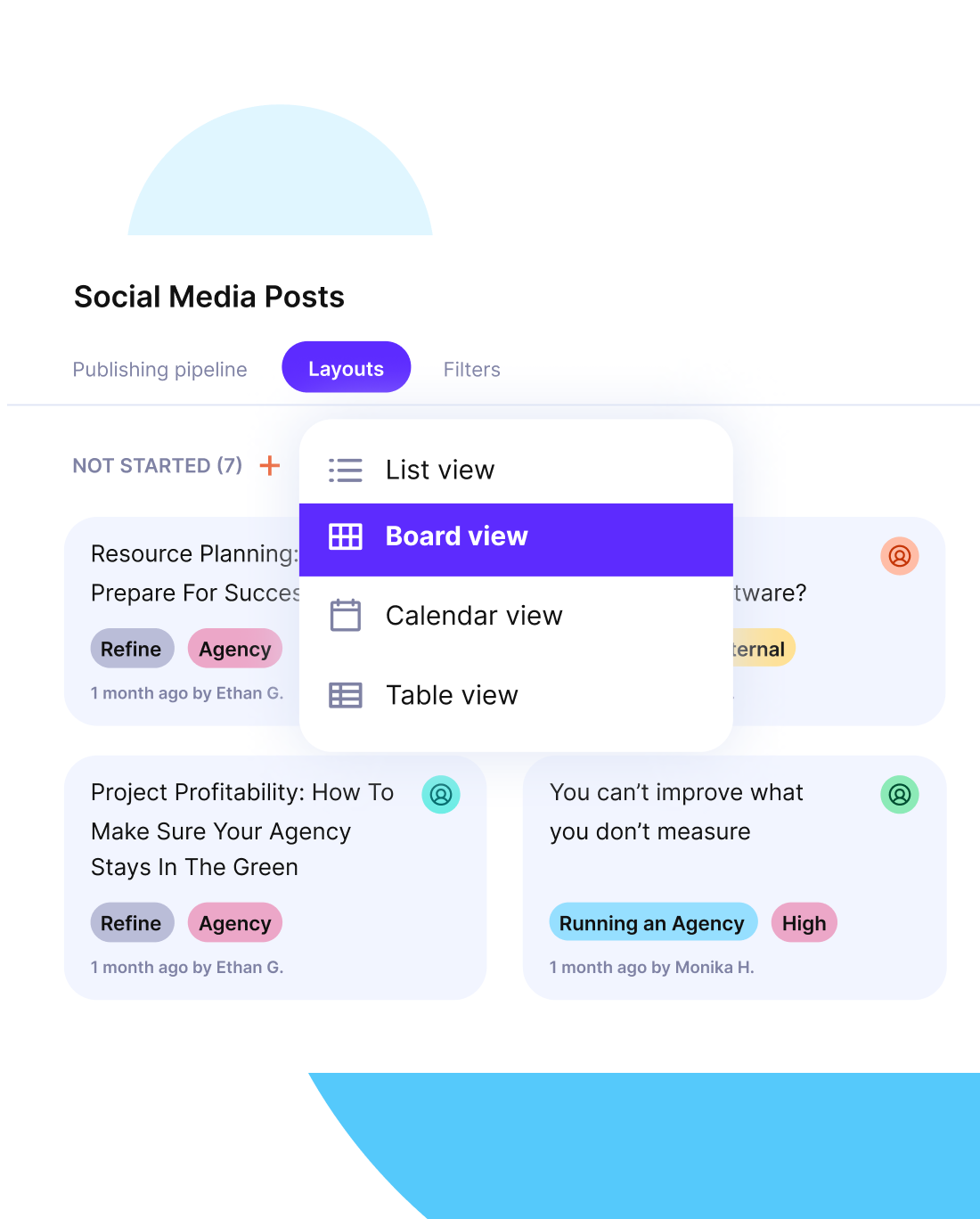What Are Project Objectives: Examples & Best Practices
Project objectives set the specific, measurable targets your team must hit to deliver a project successfully.
In this guide, you’ll learn what project objectives are, how to set and track them, and what tools make this process smother. You’ll also receive project objectives examples to copy and learn from.
Key Takeaways
- Project objectives translate high-level goals into measurable project management outcomes you can track and achieve.
- Use a proven framework for setting project objectives like SMART to ensure your targets are specific, measurable, achievable, relevant, and time-bound.
- Clear project objectives prevent misalignment between stakeholders and improve accountability.
- Project objectives are distinct from scope, deliverables, project goals, and project milestones, even though they all work together in a project plan.
What Are Project Objectives?
Project objectives are measurable targets that support broader goals. They provide the benchmarks you’ll use to track progress and evaluate performance.
For example, if a project goal is to improve customer feedback, the objective could be “Launch three new feedback channels within two months.”
In project management, the terms “goal,” “objective,” “scope,” and “deliverable” are often confused. While they’re connected, each plays a different role in guiding your project to completion.
| Term | Description |
|---|---|
| Goals | The broader visions or outcomes you want to achieve. |
| Scope | All the work required to meet those objectives. |
| Milestones | Checkpoints along the way that indicate progress. |
| Deliverables | Tangible results, such as a completed report or functional software feature. |
Below, you’ll find a more detailed breakdown comparing these elements in the context of project management.
Project Objectives vs. Project Goals
Project goals (or project aims) are broad, high-level outcomes you want to achieve. They are included in the project charter.
An objective is a specific, measurable target that supports that goal, with defined actions, metrics, and deadlines.
- Objective: Reduce average ticket response times to under 4 hours within six months.
- Goal: Improve customer support experience.
Project Objectives vs. Project Scope
While the objective states the specific results you want to accomplish, the project scope details the work, resources, and workflows needed to deliver those results.
- Objective: “Launch a new customer portal by Q3.”
- Scope: Includes the features to build, the teams involved, the timeline, and the budget required.
Project objectives define the specific end result, while scope outlines the complete set of actions, resources, and outputs needed to achieve it.
Keeping these definitions clear helps you avoid project scope creep.
Project Objectives vs. Project Milestones
Project objectives define the final results you’re aiming for, while milestones are checkpoints that let you see whether you’re on track and give you a chance to make adjustments if progress slows.
- Objective: Increase website traffic by 20% in six months.
- Milestone: Reach 10% traffic growth by the third month.
Project Objectives vs. Project Deliverables
Objectives describe the outcomes you want to achieve, while project deliverables are the concrete outputs you will produce to get there.
They’re connected, but just delivering the output doesn’t mean you’ve met the objective. The result still needs to match the project performance metrics you defined for success.
- Objective: Launch a new mobile app with 5,000 downloads in the first quarter.
- Deliverable: The fully functional mobile app itself.
Why Clear Objectives Matter?
Clear project objectives matter because they give your team direction, define what success looks like, and keep everyone working toward the same result.
They set measurable targets, guide decisions, and make it easier to use time and resources wisely.
When you set clear and effective objectives, you avoid:
- Misaligned expectations between departments or clients.
- Inefficient use of resources caused by unclear priorities.
- A lack of accountability when there’s no agreed definition of success.
The table below shows how setting clear targets impacts different areas of project management and strategic planning.
| Impact area | Why it matters (the benefits) | Example |
|---|---|---|
| Guidance and Focus | Helps your team prioritize the most impactful tasks, direct resources effectively, and make quick decisions without losing sight of the bigger picture in project planning. | Focus on high-value activities instead of low-priority work. |
| Measurable Outcomes | Provides benchmarks you can track, report on, and adjust against. | “Increase customer satisfaction survey scores by 10% over the next quarter.” |
| Stakeholder Alignment | Encourages buy-in, reduces misunderstandings, and ensures everyone works toward the same result. | Shared agreement on project priorities. |
| Better Decision-Making | Gives you a reference point for evaluating options and adjusting course when needed. | Asking “Does this move us closer to our targeted business goals?” before committing. |
What Are the Types of Project Objectives?
The types of project objectives are financial, quality, technical, performance, compliance, and business objectives. Each type serves a specific purpose, so use them to focus your efforts and measure success.
A detailed breakdown with examples is in the table below.
| Type | Goal | Example |
|---|---|---|
| Financial Objectives | Focuses on the project’s impact on revenue, profit, or cost efficiency. | Launch a PPC campaign with a 150% ROI within two months. |
| Quality | Targets improvements in product or service quality, including compliance and regulatory standards. | Update payment page to reduce abandoned carts by 15% by end of Q2. |
| Technical | Improves systems, processes, or technical capabilities. | Implement a new customer support system with AI to reduce ticket response times by 40% within two months. |
| Performance | Aims for efficiency in delivery, budget, and timelines. | Deliver a new company website within budget by the end of Q2. |
| Compliance | Ensures adherence to laws, regulations, or industry standards. | Launch a product that meets all applicable industry safety and compliance standards. |
| Business Objectives | Aligns projects with the company’s long-term vision, values, and strategic business goals. | Collect 10,000 new leads per month to increase annual recurring revenue by 20%. |
How To Write Clear and SMART Objectives for Projects?
To write clear, actionable, and SMART objectives, use the SMART criteria framework; set objectives that are Specific, Measurable, Achievable, Relevant, and Time-bound.
This framework defines exactly what you want to achieve, how to track progress with concrete metrics, how to keep goals realistic, and sets deadlines.
Here’s how to apply the SMART methodology:
- Specific: Define exactly what needs to be accomplished, leaving no room for interpretation (e.g., “Publish 12 blog posts in Q1 that target high-intent keywords.”)
- Measurable: Use clear metrics so you can track progress and know when you’ve succeeded (e.g., “Increase customer satisfaction score from 80% to 90% in six months.”)
- Achievable: Set goals that stretch your team but are still realistic given your resources and constraints (e.g., “Launch the new client portal within eight weeks using existing staff.”)
- Relevant: Make sure each objective supports your company’s broader goals or strategic priorities (e.g.,”Improve onboarding speed to support the company’s expansion into new markets.”)
- Time-bound: Set a specific deadline to create urgency and maintain momentum (e.g., “Complete the migration to the new CRM by March 31.”)
Proven Tips for Setting Clear and Understandable Objectives
The proven tips for setting clear objectives are to set them early, involve your team, keep them short and clear, stay in control of what you can influence, and review them regularly.
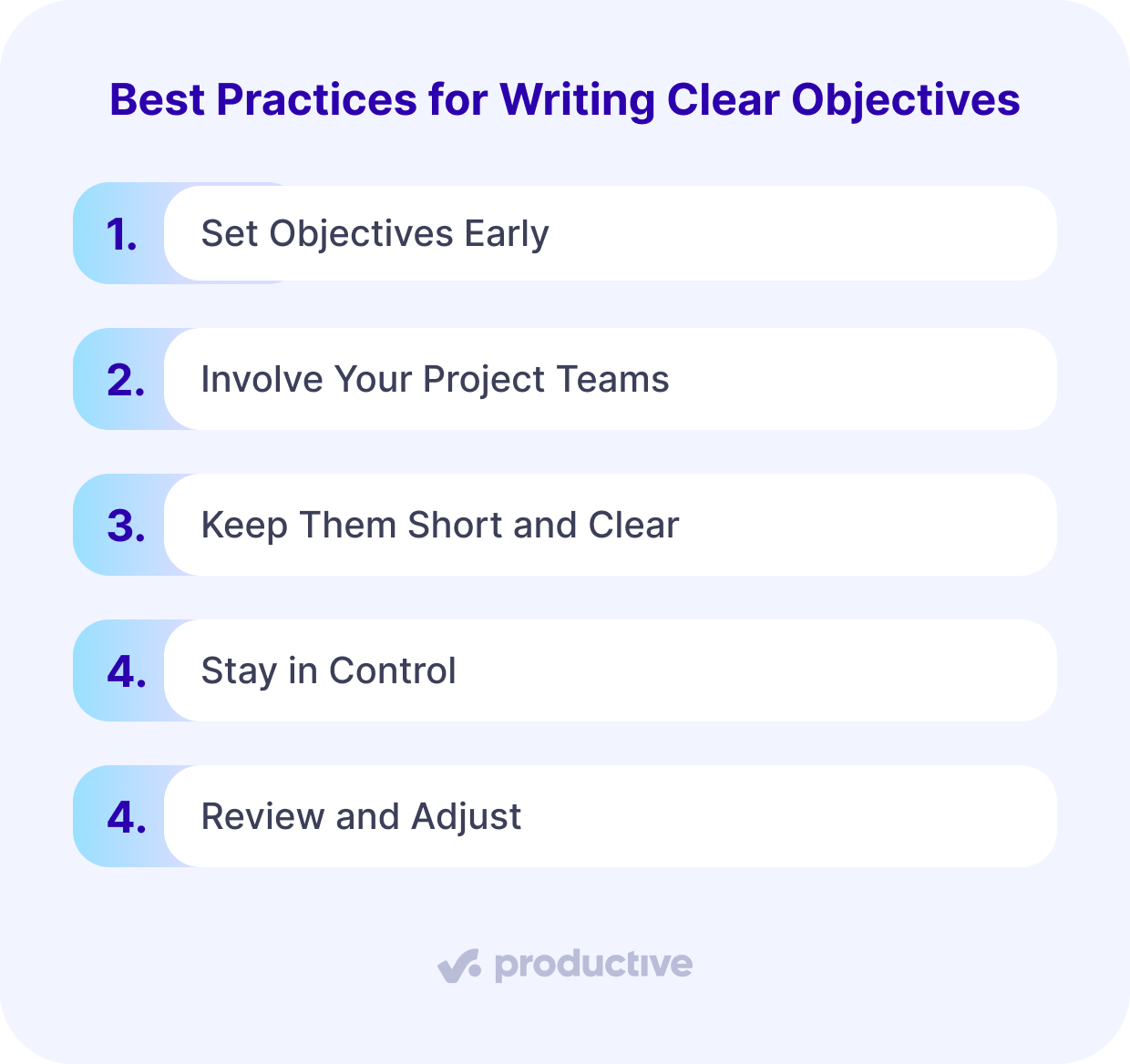
Below, we’ll teach you how to implement these best practices and which tools to use.
Set Objectives Early
Set your objectives as soon as the project begins so everyone knows exactly what they’re working toward. Doing this upfront makes it easier to plan resources, avoid last-minute changes, and get stakeholder buy-in early.
Focusing on value-based project objectives ensures that goals are tied to the outcomes and impact that matter most to clients and the business.
In Productive, you can capture and share them in one place so the whole team sees them from day one.
- Write down objectives before creating your project plan.
- Share them with the team and stakeholders immediately.
- Use them to guide decisions on scope, budget, and timelines.
Involve Your Project Teams
Bring your team into the conversation when setting objectives. A healthy collaborative culture and knowledge sharing are important because your team will often spot challenges or opportunities that you might miss.
Their input helps make goals realistic.
Productive makes it easy to collect this feedback in real time, even if your cross-functional teams are spread across locations.
- Host a quick workshop, virtual event, or brainstorming session.
- Ask team members how the objective could be achieved and what’s needed.
- Agree on final wording so everyone has a shared understanding.
Keep Them Short and Clear
Effective objectives should be easy to understand at a glance. One or two sentences with clear metrics and a deadline are enough. If it takes a paragraph to explain, it’s probably not focused enough.
- Include a measurable target and a deadline in every objective.
- Use direct, action‑oriented language.
- Create project timelines and track milestones so you can clearly see progress, costs, and budgets, and keep work on schedule.
Stay in Control
Set objectives that your team can actually influence. This keeps focus on actions you can take instead of results that depend on external factors.
For instance, instead of aiming to “Increase market share by 20%,” aim to “Launch three targeted marketing campaigns in Q2.”
- Identify the levers your team can pull.
- Avoid objectives that rely heavily on outside conditions.
- Track progress in real-time dashboards so you can see how your team’s actions are translating to results.
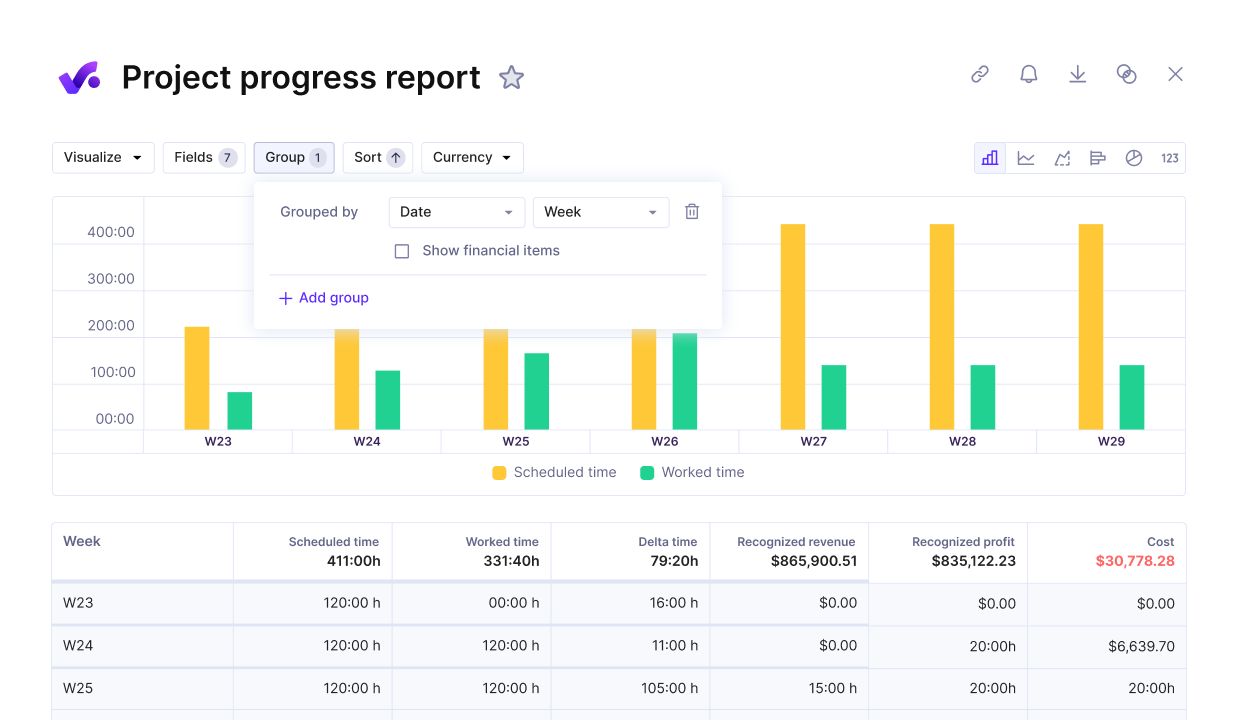
Track project progress, remaining budgets and team utilization in real-time.
Review and Adjust
Check in and review regularly. Priorities shift, and sticking to outdated goals can waste resources. Use these reviews to confirm you’re still on track or to adjust course quickly.
- Schedule monthly or quarterly reviews.
- Compare actual progress against your targets.
- Use Productive’s reporting to get a real-time view on project progress and the financial bottom line. Share these reports with everyone on the team.
Create and manage project objectives with Productive
How To Write Objective Statements That Everyone Understands?
To write objective statements that everyone understands, start by stating exactly what needs to be achieved, how success will be measured (has specific key performance indicators), and when it will be completed. In the project initiation phase, this clarity is especially important to align stakeholders from the start.
Make it so clear that anyone on your team can read it once and know exactly what’s expected.
Key Components
A strong objective statement should include:
- Clear action verbs about the action you’re taking, such as “develop a client onboarding workflow,” “launch a new feedback portal,” or “increase monthly lead volume.”
- Specific metrics that spell out exactly how progress will be measured, like “grow retention rate by 10% in six months” or “deliver three new features by Q3.”
- SMART framework alignment to ensure your statement is specific, measurable, achievable, relevant, and time-bound.
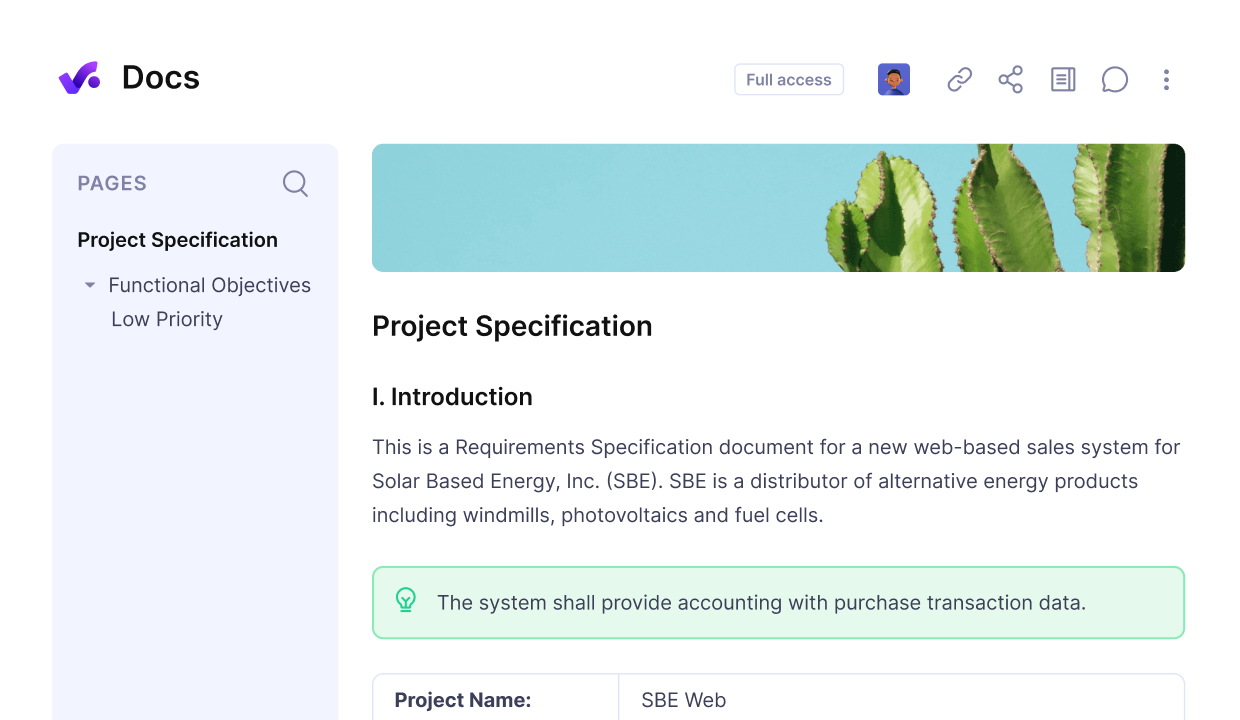
Share, edit and collaborate on project documentation in Productive.
Step-by-Step Process
1. Define the outcome: Be precise about the exact result you want to achieve
2. Add measurable detail: Include specific numbers, deadlines, or KPIs that make it easy to track success and spot issues early.
3. Check feasibility: Assess whether your team has the time, budget, and skills to deliver. If not, make adjustments before committing.
4. Align with bigger goals: Make sure the results directly support your overall project or business strategy, so every effort contributes to the bigger picture.
5. Set the deadline: Choose a clear, realistic completion date to keep the team focused and accountable.
What Are the Common Objective-Setting Mistakes and How To Avoid Them?
The most common mistakes when setting objectives are writing them in vague terms without measurable targets, failing to include deadlines, combining multiple goals into one statement, and neglecting to review and update them as the project evolves.
Here’s a simple table showing each common mistake, its impact, and how to fix it.
| Common Mistake | Impact on the project | How to fix it |
|---|---|---|
| Writing vague objectives without measurable targets | Creates confusion, makes it impossible to track progress or success | Use clear, specific metrics. In Productive, add these directly to project timelines so progress is visible to everyone. |
| Not including deadlines | Removes urgency and makes it hard to prioritize work | Set realistic deadlines and track them in Productive’s project schedules. |
| Combining multiple goals into one statement | Makes tracking difficult and dilutes focus | Break goals into separate objectives, each with its own metrics and milestones in Productive. |
| Failing to review and update | Keeps the team working toward outdated or irrelevant targets | Schedule regular performance reviews and use Productive’s reports to see progress and adjust quickly. |
Example of a Good Objective Statement
An example of a great project objective statement would be something in the lines of “Launch a new customer portal by September 30 with at least 75% of existing clients logging in within the first month.”
What You Can Learn:
- Clear outcome: The objective specifies exactly what is being delivered – a new customer portal.
- Measurable target: The 75% login rate provides a clear metric to track success.
- Deadline: September 30 gives the team a concrete date to work toward.
- Relevance: It’s directly tied to improving customer engagement and service delivery.
- Achievability: The target is ambitious but realistic, assuming existing client data and communication channels are in place.
What Are the Tools for Setting and Tracking Project Objectives?
The best tools for setting and tracking project objectives are project management software, collaboration tools, and structured frameworks that make it easier to plan, coordinate, and measure results.
All-in-one Project Management Tools
You should always use a dedicated project management tool to set objectives, connect them to deliverables, and track milestones and timelines.
All‑in‑one platforms like Productive let you do this in a single place, so tasks stay visible, progress is transparent, and you avoid juggling multiple systems.
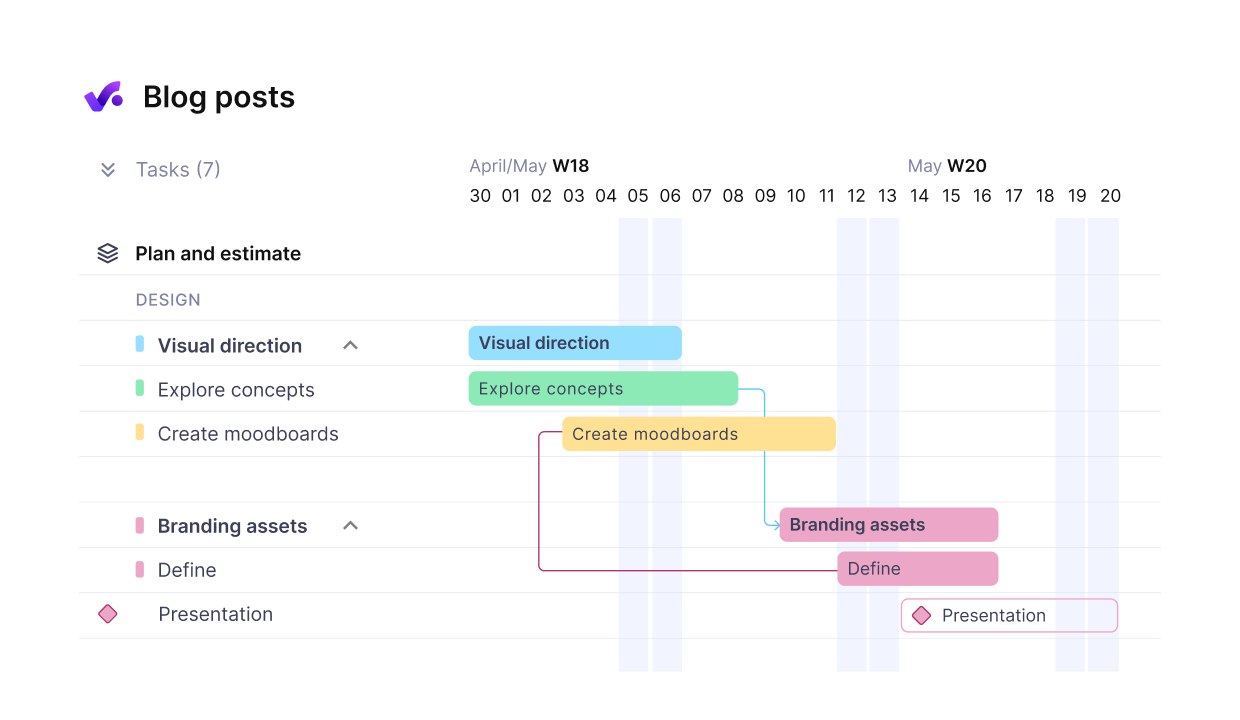
Use Productive for defining project goals and execution frameworks with dependencies.
These tools also support your company-wide goals and strategic planning. In case you need extra advice, head over to our project management software choosing guide.
Key features to look out for:
- Track progress against measurable targets in real time.
- Share updates instantly with all stakeholders.
- Keep all objective‑related data, discussions, and files in one platform.
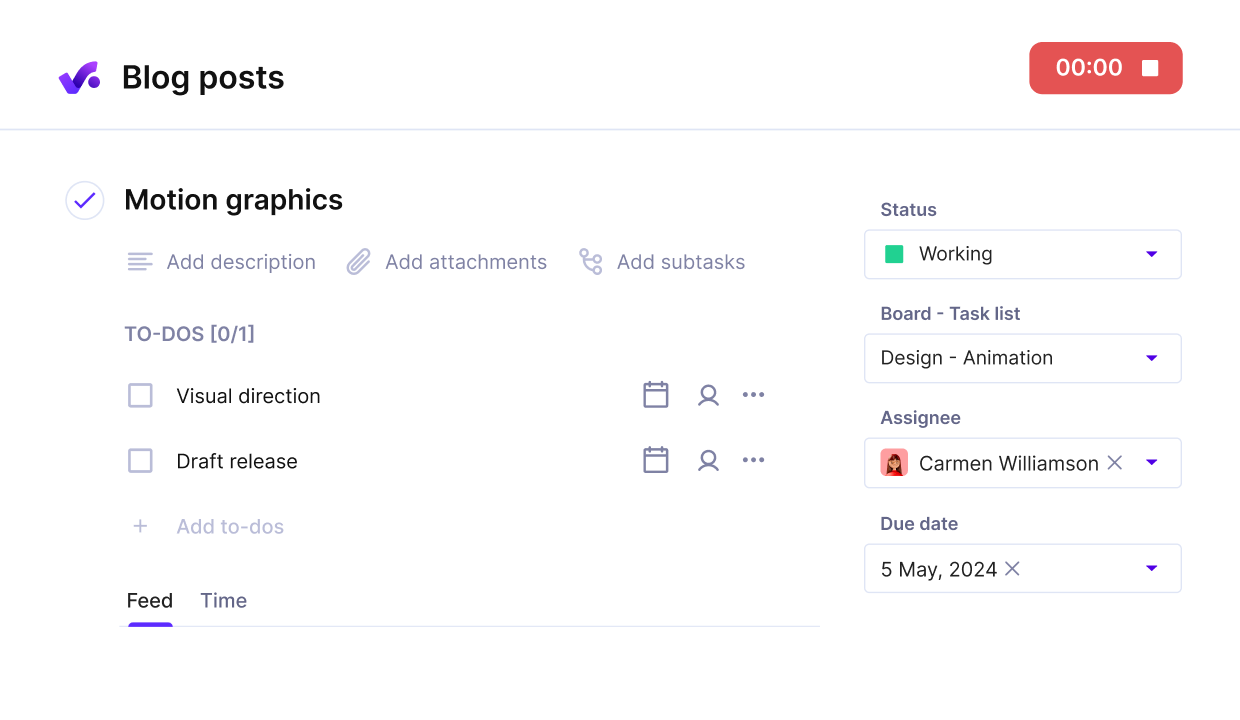
Create tasks with clear goals, descriptions and dependencies.
Final Thoughts
Clear objectives keep projects focused, measurable, and aligned with larger goals. Using frameworks like SMART, involving your team early, and reviewing regularly ensures you stay on track from start to finish.
All‑in‑one tools like Productive make this process easier by giving you one place to set objectives, connect them to timelines and budgets, track progress in real time, and share updates with your team.
Book a demo today to see how Productive can help you set, track, and achieve your project goals
Set Clear, Measurable Objectives with Productive
Connect objectives to budgets, timelines, and deliverables in one place. Track progress in real time and keep teams aligned from day one.
